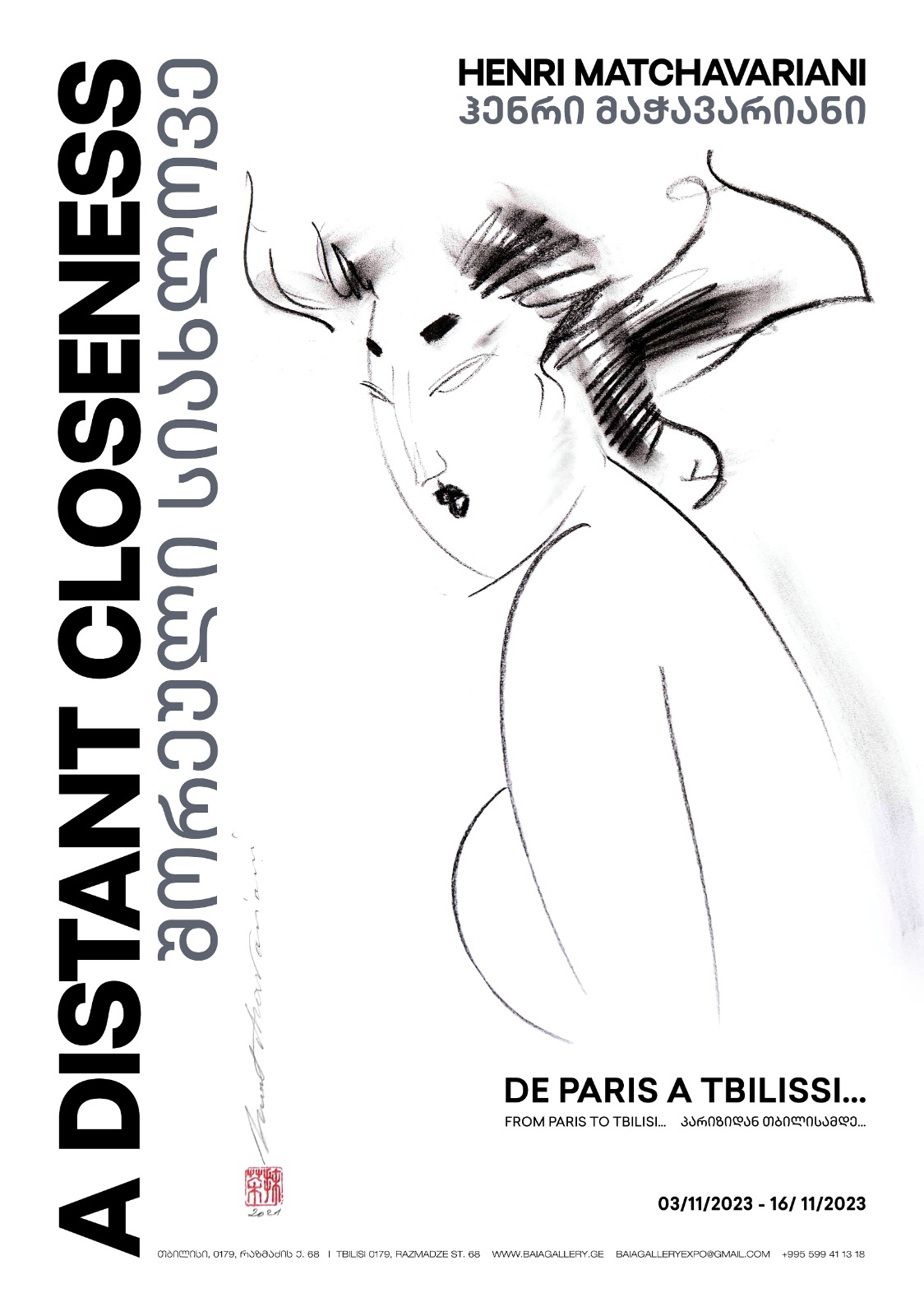Georgian Immigrant culture, on the one hand, is related to Georgia, and on the other hand, it exists independently in the field of international culture. It is always interesting to meet this culture and its representatives.
Until November 16, Baia Gallery (68 Razmadze Street) is presenting an exhibition of two Georgian artists living and working in France – Daredjane Zourabichvili and Henri Matchavariani. Daredjane presents her sculptures, while Henri showcases his graphic works.
Master of his line and gesture, carving the surrounding void, aware of the qualities of the mediums utilized, Henri Matchavariani has since a long way back been exploring the essentials.
Owing to the fertile inspiration from his Georgian origins, his work with the master of the mime art Etienne Decroux, as well as his exploration of the Japanese art of drawing, Henri Matchavariani has succeeded in finding his personal way and detaching himself from his career as a famous poster designer to follow his path towards a flawless line under the sole guidance of the “mad draftman” Hokusai.

Familiar with fencing disciplines, his hand, his entire body, shape out the space. His line brings equally the obviousness of flesh and fabric, vegetal and mineral, word and verb. Under Dotremont’s tutelage, Henri Matchavariani exudes in form of logograms words finding readily their way on paper. His signs come to life, entering a dialog with the surrounding void, throbbing with an energy confining to otherness.
Daredjane is a French sculptor of Georgian origin. She was born in Belgium and resides in France, where she completed her law studies. She began sculpting 25 years ago, which became her real passion and profession.
She exhibits regularly in France and abroad in solo or art fair exhibitions: Paris, New York, Miami, Brussels, Vienna, Toronto, and Tbilisi.
In 2019, she created the monument “Merani” (First Republic Garden in Tbilisi), which was dedicated to the memory of those who fought in political emigration for the independence of Georgia. One of her sculptures, “Shota,” remains in the Georgian National Museum in Tbilisi. Many of her sculptures belong to private collections all around the world.














